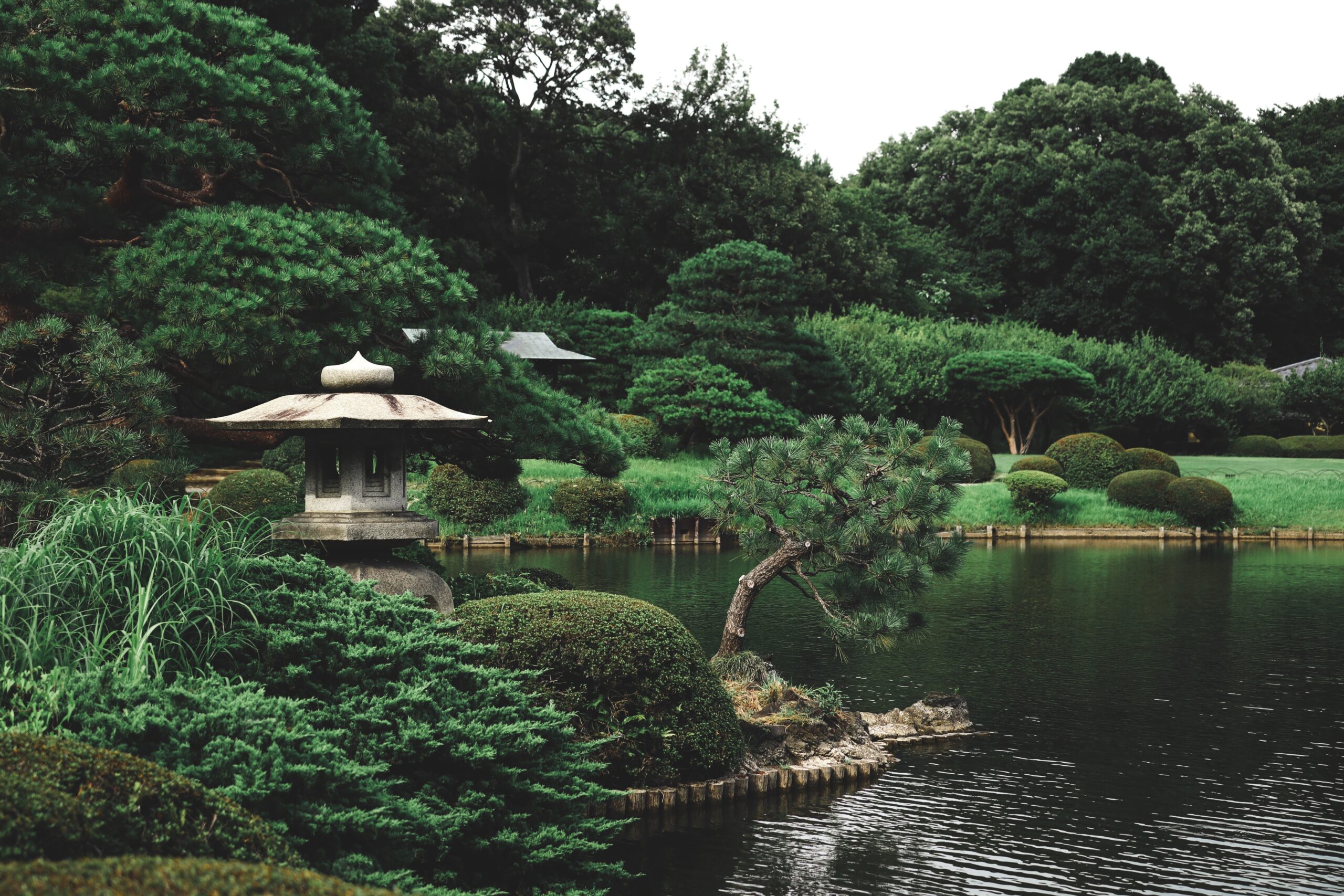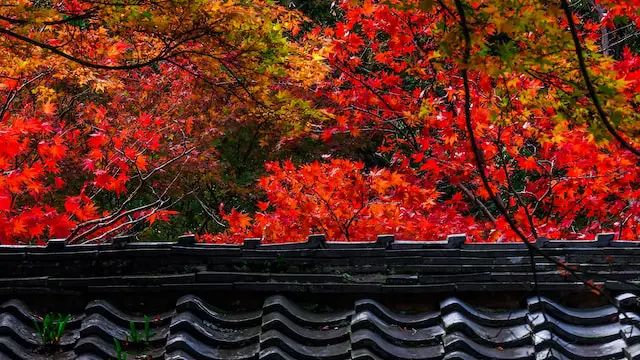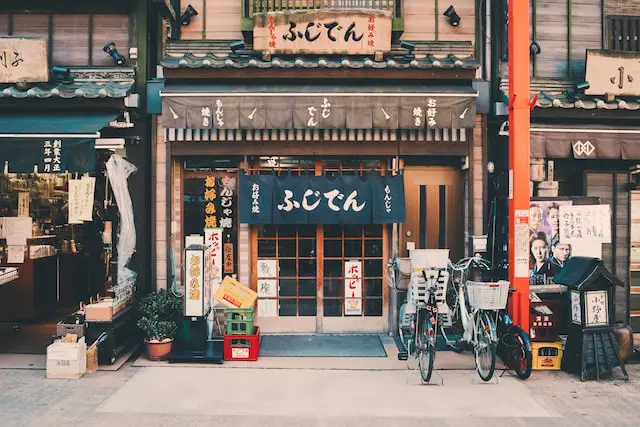Discover the Charm of Shinjuku Gyoen National Park
Welcome to Tokyo, an urban jungle that’s a confluence of modernity and tradition. No district of this vibrant city encapsulates this duality better than Shinjuku, a bustling hub known for its art, commerce, and beautiful green spaces. One attraction that stands head and shoulders above the rest lies right here: the Shinjuku Gyoen National Park.
An Overview of Shinjuku Gyoen National Park’s History
Boasting a grandeur that’s both unique and enchanting, Shinjuku Gyoen is more than just an urban park. This oasis, nestled amidst skyscrapers, is a spectacle of Japan’s natural beauty and unrivaled horticulture prowess. With the monikers ‘Japan travel’, ‘Tokyo attractions’, and ‘Shinjuku Gyoen National Park’ perennially trending in global tourism discussions, a trip to this park should definitely be on your Tokyo itinerary.
From its historical roots to its contemporary status as a beloved city escape, Shinjuku Gyoen is truly a sight to behold. Stay tuned as we bring you an exhaustive guide through this urban paradise.
Tokyo, the bustling capital of Japan, is rich in history. A vibrant example of this legacy is the Shinjuku Gyoen National Park, which stands as a testament to Japan’s Edo period, central to the ‘historical Tokyo’ identity. This majestic park, a must for a ‘Tokyo garden visit’, is a verdant oasis right in the heart of the metropolis, offering a mesmerizing blend of traditional and western gardening styles.
The history of Shinjuku Gyoen National Park traces back to the Edo period when it was the residence of the Naito family (a powerful samurai clan). Originally a feudal lord’s estate, it seamlessly melds tradition and coexistence through its design and legacy.
In the Meiji era (1868-1912), the estate was restructured to a Western-style botanical garden before being officially designated as an imperial garden. It continued to morph and evolve — embodying the periods it passed through until it was finally opened to the public as a national park in 1949. Amidst the towering skyscrapers and neon lights, Shinjuku Gyoen provides a tranquil escape steeped in historical significance.
Thus, a visit to this ‘garden in Japan’ teleports you into different periods of ‘historical Tokyo’. One look at the century-old trees, serene ponds, and aesthetic gardens, and it’s clear why Shinjuku Gyoen has etched its place firmly in Tokyo’s history. It’s a haven within the city, offering an enchanting journey that transcends time and cements its place as a beacon of Japan’s Edo period.
Explorers of history, lovers of natural beauty, or those in pursuit of tranquility, the allure of Shinjuku Gyoen is irresistible. A quintessential part of any Japan travel itinerary, and a vivid embodiment of Tokyo’s history, bringing an experience like none other to each visitor.
Unique Features of Shinjuku Gyoen National Park
In Tokyo resides an astonishing symphony of nature, the Shinjuku Gyoen National Park. Not just your ordinary park, ‘Shinjuku Gyoen’ showcases a unique fusion of three magnificent garden designs from around the world. These divisions are ready to enchant every ‘Tokyo garden visit’ with their distinct beauty.
The Three Major Park Divisions
The first division highlights the lush tranquility of a traditional ‘Japanese garden’, complete with captivating sights of teahouses and charming little bridges that accent the serene ponds. Next, feel like entering a scene from a French storybook, as the park takes you to its ‘French Formal’ garden adorned with solid geometric lines and parterre designs. Lastly, a ‘English Landscape’ garden awaits, characterised by its sweeping lush landscapes, rolling lawns, and informal arrangement of trees often found in these Western designs. The amalgamation of these styles right in the heart of Tokyo makes ‘Shinjuku Gyoen’ one of the quintessential ‘gardens in Japan’ to visit.
Diversity Makes Shinjuku Gyoen a Must-See
Each garden division brings a unique flavor to your journey, making the park a travel bucket list-worthy for any nature-loving traveler headed for Tokyo. From the hypnotic zen of the Japanese garden, moving to the symmetrical elegance of the French formal, and finally, sighing in the gentle embrace of the English landscape garden, Shinjuku Gyoen is truly a world in itself. It allows you to time-travel, crossing national borders without leaving Japan, making it an essential stop for any ‘Tokyo garden visit.’
The Multicultural Green Spaces
The Shinjuku Gyoen National Park is a representation of a harmonic blend of aesthetics from different corners of the world. It is broken down into three fascinating gardening styles, each area seeping with beauty and tranquility, reflecting its origin and historical significance.
The Japanese Traditional Garden embraces the authentic, minimalist elegance native to ‘Japanese landscaping’. The well-pruned shrubs, meticulously raked sand, stone arrangements, and tranquil ponds replete with koi fish, all contribute to a peaceful and introspective ambience.
Nestled in the heart of Tokyo, one might be surprised to find a garden straight out of a European pastoral paradise. The French Formal Garden mirrors the precision and ‘French garden design’ of the 17th century. Framed by beautifully trimmed hedges, a symmetrical layout, and bright flowerbeds, it offers a distinctly different experience of lush beauty.
The final division is the English Landscape Garden, boasting a much more casual, free-flowing aesthetic. True to the ‘English garden aesthetic’, it is typified by wide, rolling lawns interspersed with trees, winding paths, and a large greenhouse christened ‘The Tropical Rainforest Dome’ housing tropical and subtropical plants. It feels like a spontaneous, romantic stroll in the *English countryside.
The multiculturality of these green spaces is one of the reasons that makes a ‘Tokyo garden visit’ to Shinjuku Gyoen National Park an absolute delight. Each garden exemplifies a unique design principle honoring its origins, making the park an international symbol of unity, harmony and the shared love for nature’s beauty.
Cherry Blossom Season
Nothing quite heralds the arrival of spring in Japan than the blooming of its famous Cherry Blossom trees or Sakura, a spectacle drawing crowds from all around the world. Among the best locations to marvel at this spectacle is the serene setting of the Shinjuku Gyoen National Park.
During late March to early April, Shinjuku Gyoen transforms into a spectacular tableau of pale pink and white blossoms. This breathtaking scenery is a perfect backdrop for your photos and an idyllic setting for the traditional Hanami festival. The Hanami festival or “flower viewing” festival, an integral part of Japanese culture dating back centuries, involves people gathering under the blooming Sakura for picnics, singing, and merry-making, embracing the transient beauty of cherry blossoms.
The park houses over a thousand cherry trees, each distinct in its blossom type: some bloom early, some late, thereby guaranteeing a longer viewing period. Stroll under the snow-like canopy of the Somei-Yoshino variety, the most iconic cherry blossoms, or admire the striking beauty of the bright-pink Kanzan cherry trees.
It’s not just about the awe-inspiring sights either. The atmosphere during this period is electric with excitement and wonder. You’re surrounded by hoards of people, Japanese locals, tourists, artists, even anime cosplayers, all gathered to celebrate the fleeting beauty of the Sakura.
Experiencing the Cherry Blossom season in Shinjuku Gyoen is not just a treat for the senses but also a profound insight into Japan’s reverence for nature and the beauty of the ephemeral. So make sure to seize this opportunity to be part of a beautiful Hanami tradition and paint your Japan travel with the hues of Sakura!
Seasonal Festivals and Events
Shinjuku Gyoen, one of Tokyo’s most renowned parks, is famous not just for its breathtaking gardens but also for the variety of ‘Japanese festivals’ and events held throughout the year. The park is a hotspot for ‘Seasonal Tokyo’ celebrations and also hosts a myriad of ‘Park events in Japan’, attracting locals and tourists alike.
One of the most notable of these is the Chrysanthemum Exhibition held every November. The serenity of the park transforms into a grand display of these royal flowers, demonstrating the cultural significance they hold in Japanese history. Visitors can admire the colorful mums arranged aesthetically, creating a traditional Japanese atmosphere not to be missed.
Another must-attend event is the Sakura Matsuri or Cherry Blossom Festival during springtime. Guests flock to enjoy the park’s enchanting sakura trees in full bloom. It’s an incredible spectacle that showcases Japan’s most famous flower in all its glory, creating a picturesque ‘Hanami’ picnic spot under the cherry blossom trees.
The park also hosts traditional tea ceremonies in the Rakuutei Tea House during specific periods. Here, you can experience Japan’s timeless tradition of brewing, serving, and consuming tea. This is an exceptional opportunity to immerse yourself in Japanese tradition, rituals, and etiquette.
Regardless of the time of your visit, Shinjuku Gyoen promises a host of events and festivities reflecting the wonderful mix of tradition and seasonal beauty that embodies Tokyo. It is more than just a park; it’s a glance into the heart of Japanese culture.
Visitor Information
Now that you’re excited to immerse in the tranquility of Shinjuku Gyoen National Park, here are some vital details to aid your travel plans. To begin with, the keywords to remember are ‘Shinjuku Gyoen hours’, ‘Park ticket prices’, and ‘Japan travel tips’.
The park opens at 9:00 AM and closes at 4:00 PM, with the final admission at 3:30 PM. Please bear in mind that Shinjuku Gyoen is closed on Mondays, except if it’s a national holiday – you wouldn’t want your visit cut short! Use the keyword ‘Shinjuku Gyoen hours’ to confirm these timings during your travel period.
The ticket prices are quite reasonable, as most Japanese attractions are. Adults are charged an entry fee of 500 yen, while students and senior citizens pay 250 yen. Children can enjoy free entrance, making Shinjuku Gyoen an excellent choice for family outings. Search with ‘Park ticket prices’ for any updates.
One important tip for your visit to Shinjuku Gyoen – always respect the ‘no alcohol’ and ‘no sport games’ regulations in the garden. The intent is to maintain the park’s tranquility and safety. Please remember that pets are not permitted and it’s also essential to take any litter with you to help maintain the park’s cleanliness. You can find more ‘Japan travel tips’ for a seamless experience.
In summary, Shinjuku Gyoen is a treasure amidst the bustling Tokyo city. Equipped with the right information, your visit will surely become one of your treasured memories.
Getting There and Around
Traveling to Shinjuku Gyoen National Park is incredibly manageable, thanks to Japan’s stellar transportation systems. Navigating around Tokyo and reaching the park is an experience of efficiency and punctual timing, integral components of ‘Tokyo public transport‘. Here are some tips to ensure your journey is trouble-free.
For those staying in Tokyo, several transportation options can bring you right to this prominent destination. The most popular include the JR Yamanote Line and the Tokyo Metro Marunouchi Line. Shinjuku Station, one of the busiest stations for ‘Traveling in Japan‘, is within reasonable walking distance of the park.
Coming by foot from Shinjuku Station, head out of the New South Exit or the South Exit and walk along Koshu-Kaido Street heading eastwards. In about ten minutes, you’ll find the park’s Okido Gate on your left. If you’re using JR Chuo Line, alight at Sendagaya Station, and you will be a short walk away from the Sendagaya Gate of the park.
Alternatively, if you prefer to conserve your energy for park exploration, taxis can be found abound near many of the city’s train stations. Remember to have the park’s Japanese name, ‘新宿御苑’ ready to communicate with the driver easily.
Once inside the park, navigation is straightforward. Paths are well-marked and lead you to beautiful ‘Directions to Shinjuku‘ Gyoen’s main areas, from the Japanese Traditional Garden to the French Formal Garden and the English Landscape Garden. The park also provides accessible routes for visitors with limited mobility or those pushing strollers.
Lastly, don’t forget to embrace the journey and enjoy each moment. Experiencing travel in Tokyo is as much an adventure as visiting the destinations!
Tips for the Best Experience
As you get ready to add Shinjuku Gyoen National Park to your ‘Japan travel guide’, consider some key tips from past visitors to enrich your experience. Whether you are a seasoned traveler or just starting to explore ‘Tokyo sightseeing tips’, these recommendations offer practical insights to heighten your journey.
Firstly, time your visit to avoid large crowds. While weekends and holidays can be quite lively, they are often packed, potentially overshadowing the park’s serene atmosphere. Most reviewers recommend visiting on weekday mornings when the park is less crowded.
Another must-remember pointer is to respect the park’s regulations. Shinjuku Gyoen is a national park and important historical site. Therefore, it’s imperative to observe all restrictions to protect its cultural and natural beauty.
Furthermore, don’t forget your camera! The park is a heaven for photography enthusiasts, and you’d want to capture the stunning ‘Shinjuku Gyoen’ vistas. While each garden has its charm, the traditional Japanese garden tends to be a visitor favorite.
If you plan to stay for a while, remember to bring your lunch and a small blanket. Picnics are very popular at Shinjuku, especially under the Sakura trees during the Cherry Blossom season. Bear in mind, though, alcohol and plastic sheets are not allowed in the park.
In terms of attires, wearing comfortable clothes and shoes would significantly enhance the experience, as the park is large and entails a considerable amount of walking.
Conclusion
To conclude, a visit to Shinjuku Gyoen National Park in Tokyo is nothing short of enchanting. With these ‘Shinjuku Gyoen recommendations’, you’re well-equipped to experience this oasis of beauty and calm in Japan’s bustling city.
In conclusion, Shinjuku Gyoen National Park is undoubtedly one of Tokyo’s most remarkable attractions, a perfect blend of both history and horticultural beauty. This urban oasis with its exquisite Japanese, French, and English gardens offers both serenity and scenic beauty, making it a must-visit spot, especially during the splendid Cherry blossom season.
If you’re truly passionate about exploring Tokyo, a visit to Shinjuku Gyoen will provide you with a sense of Japan’s rich culture and love for nature. The park’s soothing atmosphere combined with its vibrant floral displays throughout the year promises an unforgettable experience for any global traveler.
We highly encourage all to visit Japan and particularly make time to discover Shinjuku Gyoen National Park. Every corner of the park offers a unique discovery and priceless memories. Embrace the opportunity to experience the heart of Tokyo in a simultaneously picturesque and peaceful setting like no other. Happy Japan Exploring!




